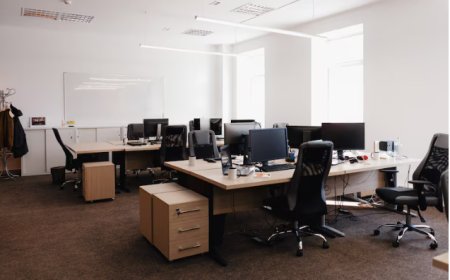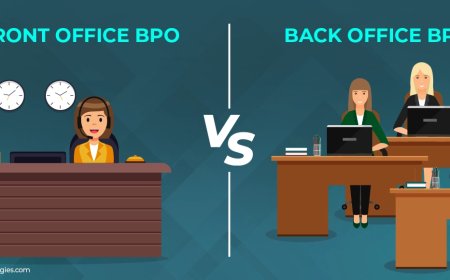The Importance of Choosing the Right Office Furniture for a Productive Workspace
In todays fast-paced business environment, the design and layout of an office play a crucial role in employee productivity and well-being. Among the many factors that contribute to an effective workspace, office furniture stands out as one of the most influential. Its no longer just about aesthetics; modern companies now understand that functional, ergonomic, and strategically designed furniture can significantly enhance workflow and employee satisfaction. From ergonomic chairs to height-adjustable desks and modular workstations, every piece of furniture contributes to the culture and efficiency of a workplace. The way office furniture is selected and arranged can either support productivity or hinder it. Businesses that overlook this aspect may experience lower morale, reduced collaboration, and even increased health complaints from their teams. On the other hand, companies that invest in quality, adaptable furniture see improvements in focus, posture, and overall work output. In a world where hybrid work and flexibility are becoming the norm, its more important than ever to create work environments that support varied working styles while maintaining cohesion and comfort.
Ergonomics and Employee Health Should Be a Priority in Office Design
One of the core principles behind modern office furniture design is ergonomicsthe science of designing the workspace to fit the workers physical needs. Ergonomic chairs, desks, and monitor arms help maintain natural posture and reduce strain, thereby preventing musculoskeletal disorders. Prolonged sitting is often linked with chronic back pain, eye strain, and wrist discomfort, which is why it is essential to invest in furniture that supports good posture. Adjustable chairs with lumbar support, desks that can alternate between sitting and standing positions, and keyboards positioned at optimal angles are all part of a well-ergonomic setup. Office ergonomics doesn't just improve health; it boosts productivity by allowing employees to focus without the distraction of physical discomfort. Companies are now realizing that prioritizing ergonomics reduces absenteeism due to workplace-related injuries and increases job satisfaction. Happy, healthy employees are more engaged, creative, and efficient, which ultimately contributes to the success of the business.
How Office Furniture Impacts Collaboration and Communication
Office layout and furniture design directly influence how teams interact and communicate. Open-plan layouts with modular office furniture are increasingly being used to encourage transparency and collaboration among employees. Movable furniture allows for easy reconfiguration, making it possible to adapt the space for team meetings, brainstorming sessions, or individual work. Conference tables, lounge seating, and shared workstations create a dynamic environment that nurtures interaction and idea exchange. On the other hand, businesses that require more privacy often opt for cubicles or partitioned workstations that help employees focus without distractions. The key is to strike a balance between collaboration and concentration. This is where versatile furniture comes into playit can be rearranged based on the changing needs of the team or department. Furniture that supports both formal and informal meetings allows for seamless transitions between solo work and group collaboration, making the workplace more agile and adaptable.
The Role of Office Aesthetics in Employee Morale and Branding
Office aesthetics are no longer just a nice-to-havethey are now seen as a strategic tool for branding and employee engagement. Stylish, cohesive office furniture not only reflects the companys culture and values but also enhances the psychological well-being of the employees. A thoughtfully designed workspace that incorporates color psychology, natural lighting, and biophilic design can uplift moods, reduce stress, and even boost creativity. Modern office furniture is available in a wide range of materials, finishes, and designs that can align with the brand image. For instance, a tech startup may opt for minimalist, industrial-style furnishings, while a creative agency may lean towards bold, colorful elements. The goal is to create an environment where employees feel inspired and connected to the companys mission. A well-furnished office is also a strong signal to visiting clients and partnersit communicates professionalism, attention to detail, and a commitment to quality. These elements can positively influence business relationships and client trust.
Sustainability and Eco-Friendly Trends in Office Furniture
With the global push towards sustainability, more businesses are seeking office furniture that is environmentally responsible. Sustainable office furniture not only helps companies reduce their carbon footprint but also appeals to eco-conscious employees and clients. Many manufacturers now offer furniture made from recycled materials, low-VOC finishes, and ethically sourced wood. Some furniture lines even support a circular economy by designing pieces that are easy to repair, disassemble, and recycle. Green certifications such as GREENGUARD or FSC have become common indicators of sustainable office furniture. Additionally, companies are adopting upcycling and refurbishing practices, giving old furniture a second life instead of contributing to landfills. This environmentally responsible approach enhances a brands reputation and shows a commitment to corporate social responsibility. Employees also appreciate working in spaces that align with their values, making them more loyal and motivated. In the long run, sustainability isn't just good for the planetits a strategic advantage for business growth and employee retention.
Customization and Flexibility Are the Future of Office Layouts
The modern workplace is anything but one-size-fits-all. Companies now recognize the need for flexibility and customization in their office furniture choices. Employees have different work preferencessome thrive in quiet, enclosed spaces, while others are energized by open, collaborative settings. To accommodate this diversity, businesses are turning to modular furniture solutions that can be easily moved, expanded, or reduced. Height-adjustable desks, mobile storage units, and configurable seating arrangements allow organizations to adapt quickly to changes in team size, department structure, or work style. Even meeting spaces are becoming more versatile with the use of foldable tables and stackable chairs. This level of customization is especially important in the era of hybrid work, where employees may only be in the office a few days a week. Companies can no longer afford static layouts that dont evolve with their needs. By investing in flexible office furniture, businesses can future-proof their workspaces and remain agile in a constantly changing business landscape.
Conclusion: Investing in the Right Office Furniture Pays Off
The workplace is undergoing a transformation, driven by technology, employee expectations, and evolving business models. At the heart of this transformation lies the need for purposeful and intelligent office design. Choosing the right office furniture is not just about filling a spaceits about creating an environment where people can thrive. From ergonomics to aesthetics, sustainability to flexibility, every element of office furniture plays a role in shaping the employee experience and ultimately influencing organizational success. Companies that prioritize thoughtful furniture selection and layout enjoy higher productivity, better employee retention, and a stronger brand identity. As businesses continue to navigate the complexities of modern work, those who understand the strategic value of well-designed office environments will stand out. The brand "office furniture" represents more than productsit symbolizes a commitment to workplace excellence, innovation, and the well-being of the people who bring organizations to life.



























